[MM] VLM2VEC: Training Vision-Language Models for Massive Multimodal Embedding Tasks
[MM] VLM2VEC: Training Vision-Language Models for Massive Multimodal Embedding Tasks
- paper: https://arxiv.org/pdf/2410.05160
- github: https://github.com/TIGER-AI-Lab/VLM2Vec
- archived (인용수: 0회, ‘24-10-20 기준)
- downstream task: Ranking tasks (classification, Vision Question & Answering, Multimodal Retrieval, Visual Grounding)
1. Motivation
-
Embedding은 다양한 downstream task를 수행할 수 있다.
-
이로 인해 Universal 한 text embedding에 대한 많은 연구가 진행되었으며, 대표적인 benchmark으로 MTEB (Massive Text Embedding Benchmark)가 등장했다.
-
하지만, Multimodal embedding 도메인에 대해서는 benchmark도, methods도 도전적인 연구과제로 남아 있다.
- Vision embedding만 평가하거나, 단독 task에 대해서만 수행한다. (ex. MSCOCO/Flickr retrieval)
- vision과 text를 단독으로 처리한다. (ex. CLIP, BLIP) 이로 인해 두 modality간의 관계를 잘 놓친다.
$\to$ 이를 해결하는 benchmark & method를 제안해보자!
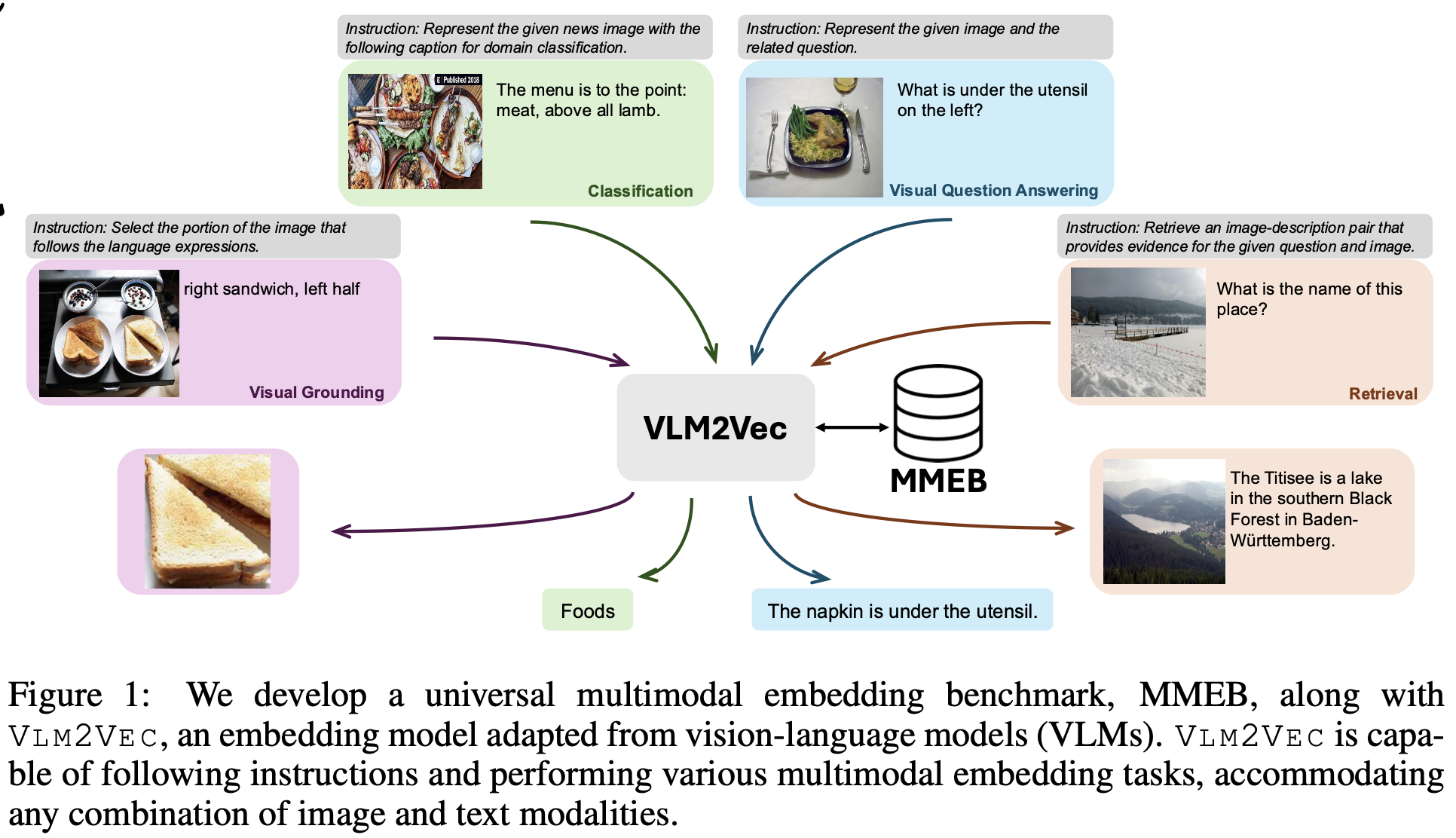
2. Contribution
-
Multimodal embedding을 위한 benchmark MMEB (Massive Multimodal Embedding Benchmark)를 제안함
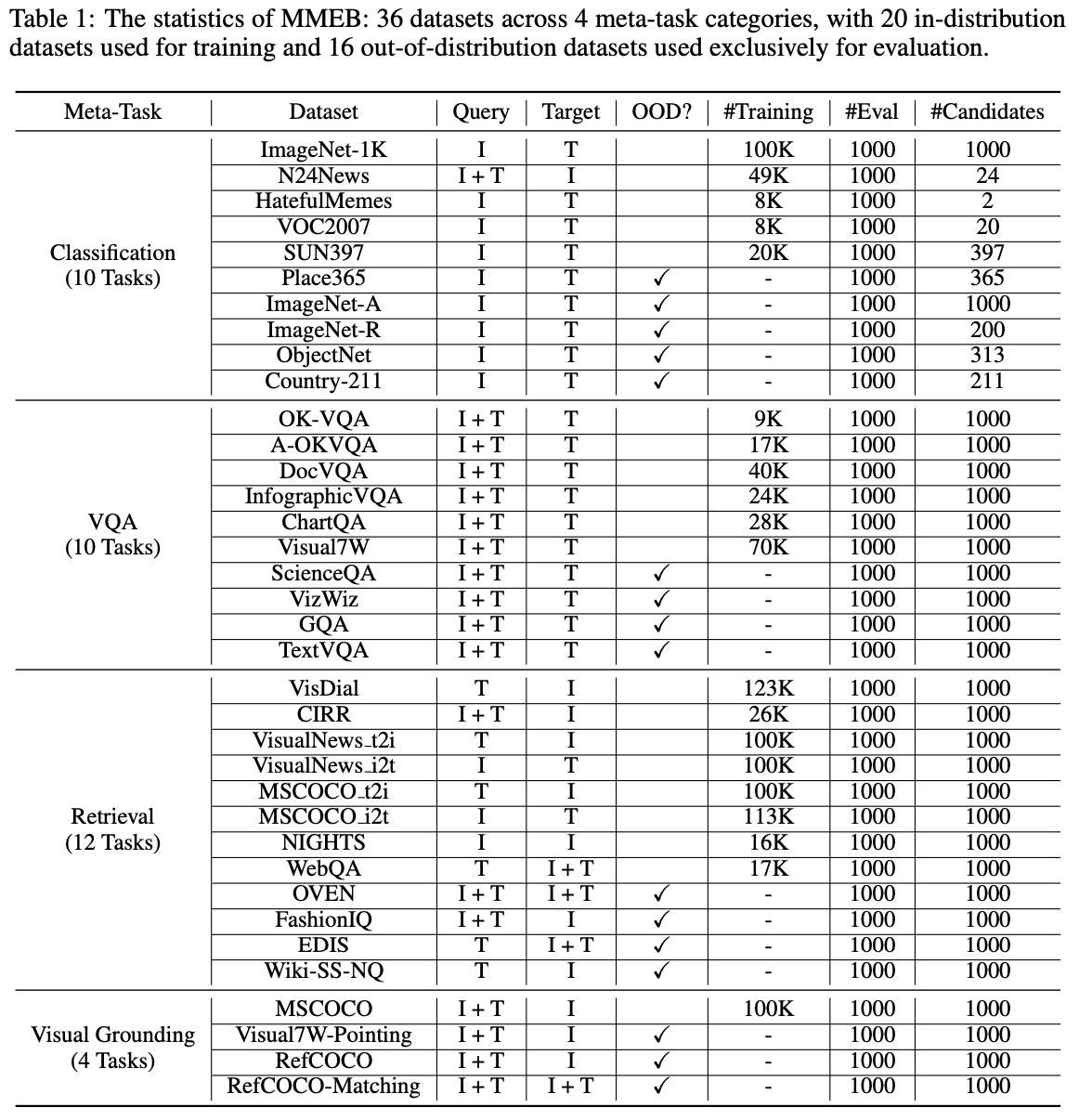
-
36개 datasets이 4개의 meta-task categories로 구성: classification, vision quesiton & answering, retrieval, vision grounding
-
이 모든 task를 ranking task로 변환함 (1,000개의 candidate중 1개를 고르는 task)
-
20개의 Training set (in-distribution dataset) 과 16개의 (domain이 다른) validataion dataset (Out-of-distribution dataset)로 구성하여 generalization 능력을 측정하고자 설계함
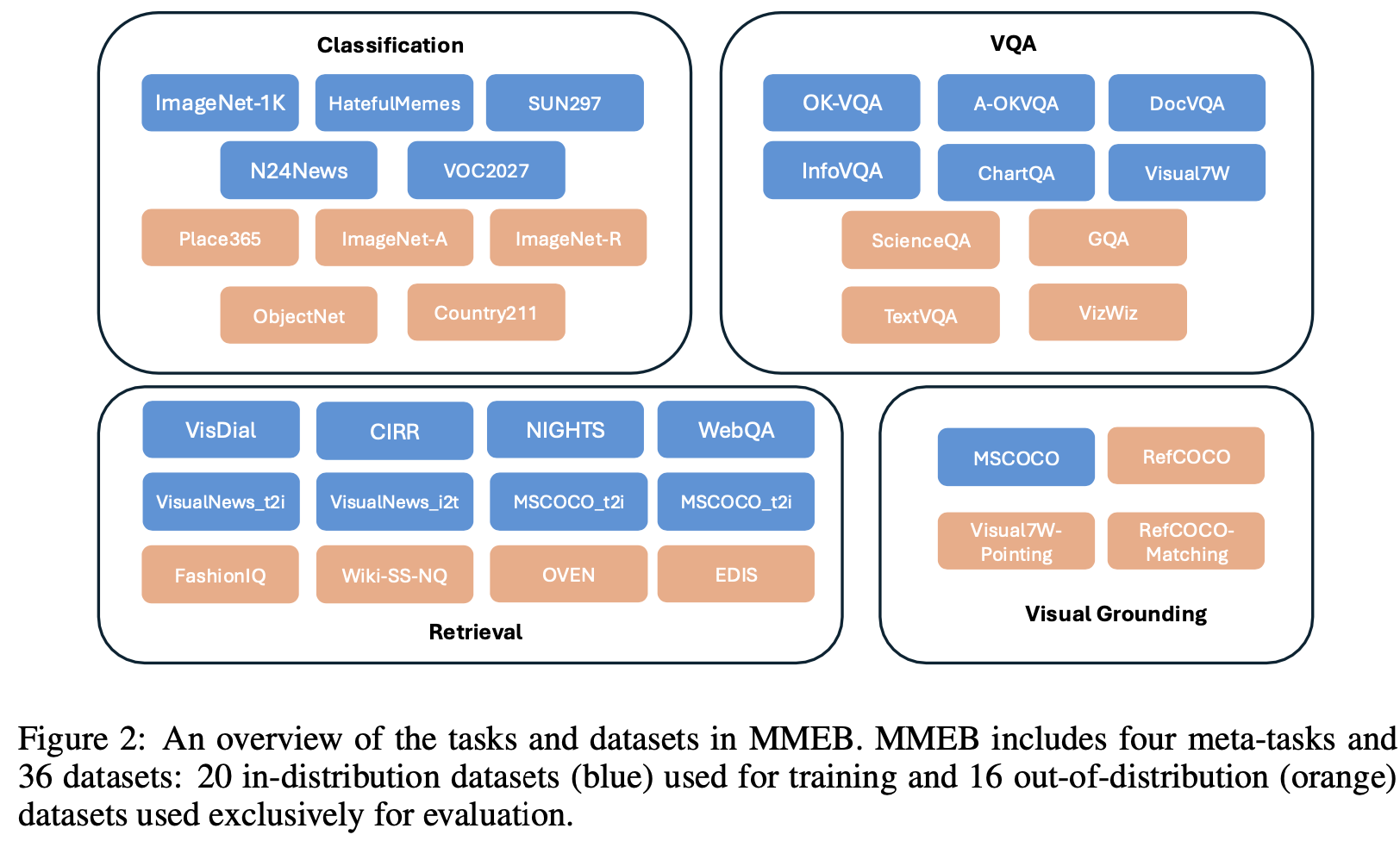
-
-
Pretrained VLM 모델 Phi-3.5-V을 backbone으로 하며 contrastive learning 기반의 VLM2VEC을 제안함.
- 고차원의 이미지 처리 가능 + 긴 text 문장 처리 가능
- Transformer기반 모델 내에서 text와 vision 간의 deeply fused 됨 $\to$ cross modality간의 관계성을 잘 찾을 수 있는 구조
- instruction-following 능력 기반으로 다양한 task를 수행할 수 있게 됨
3. VLM2Vec
-
Overall Diagram
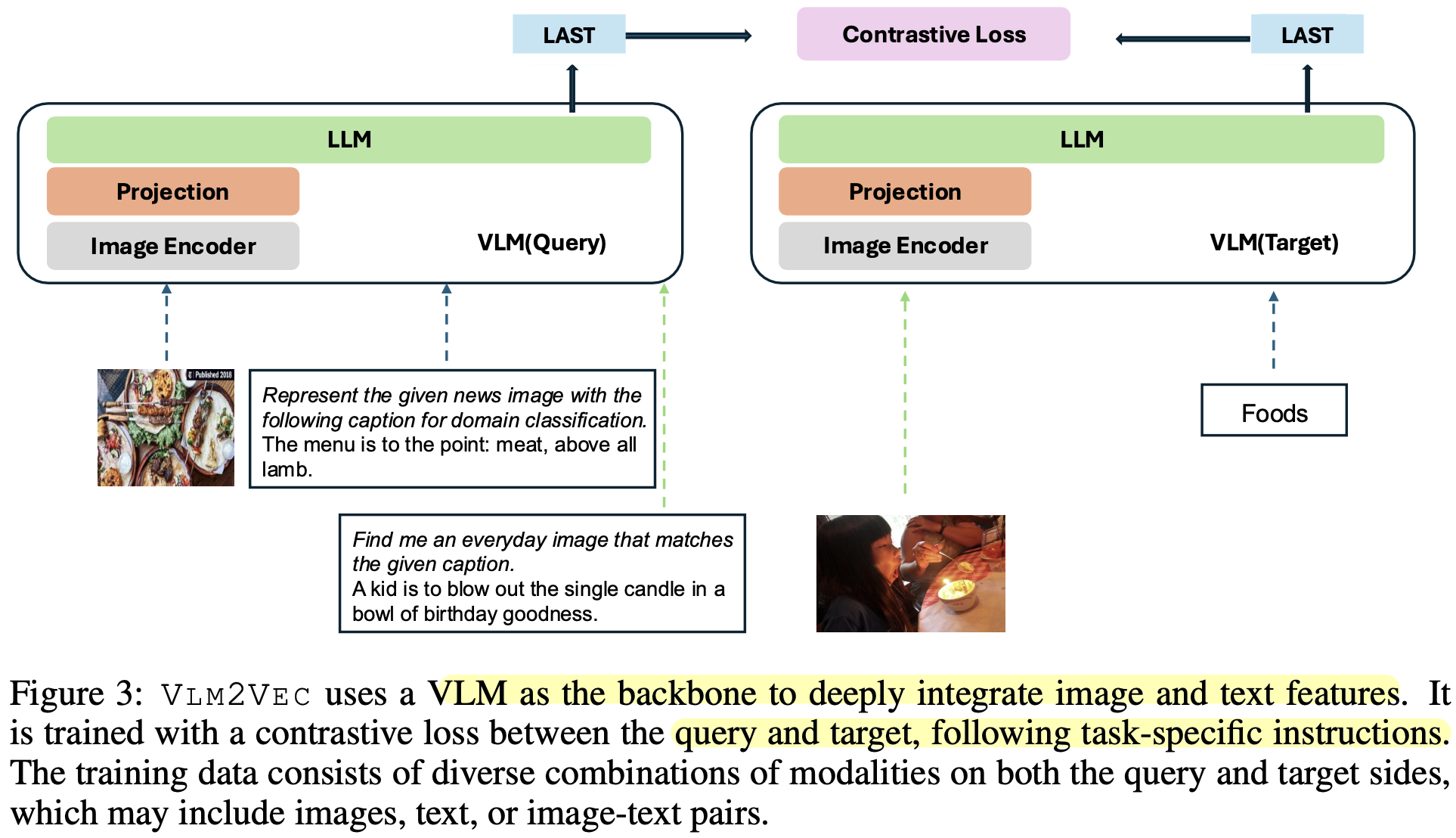
-
Baseline: Phi-3-V (pretrained VLM)

-
$q_{inst}$: query의 instruction

-
task_definition: classification, vqa 등 task마다 정형화된 instruciton
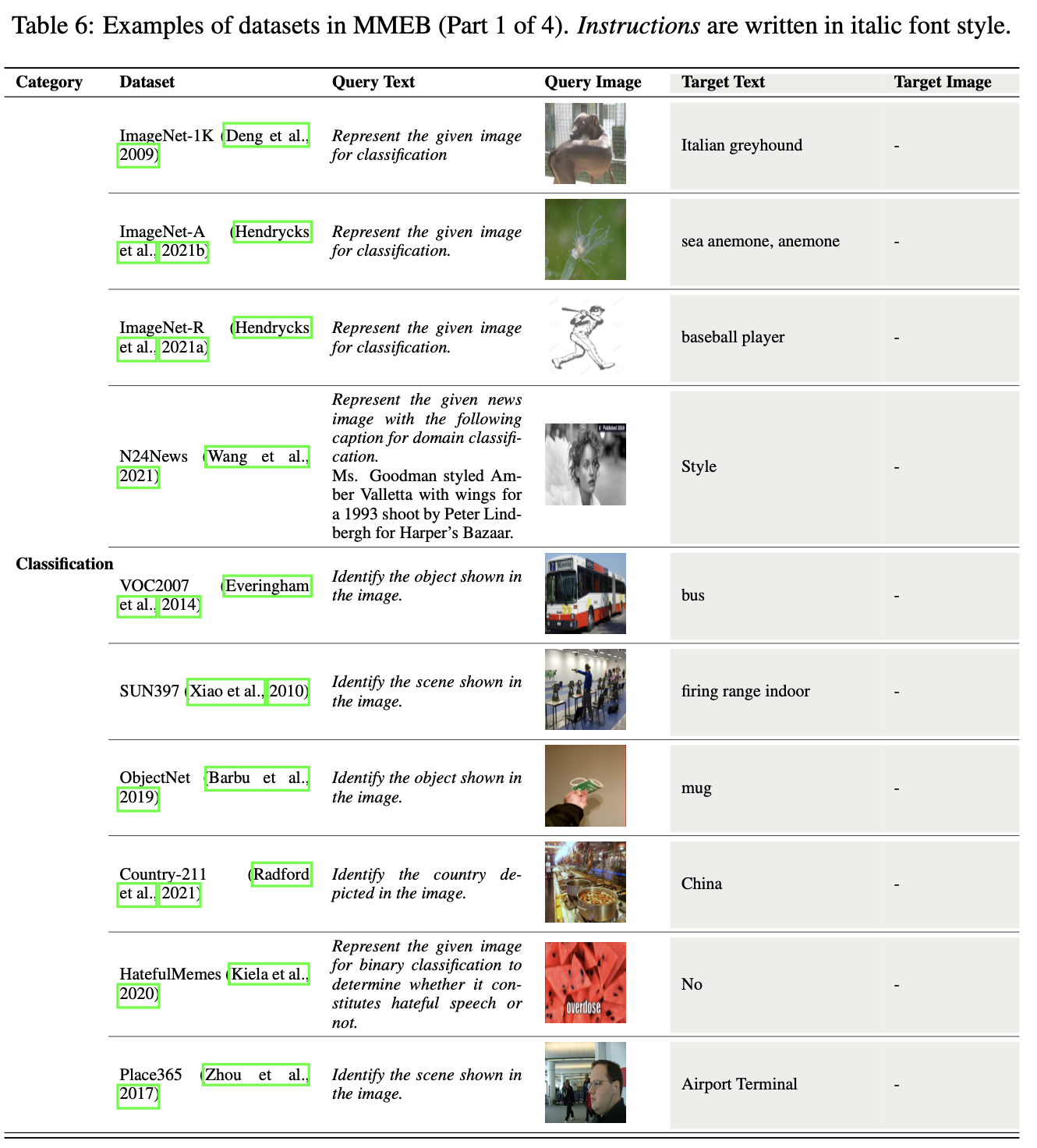
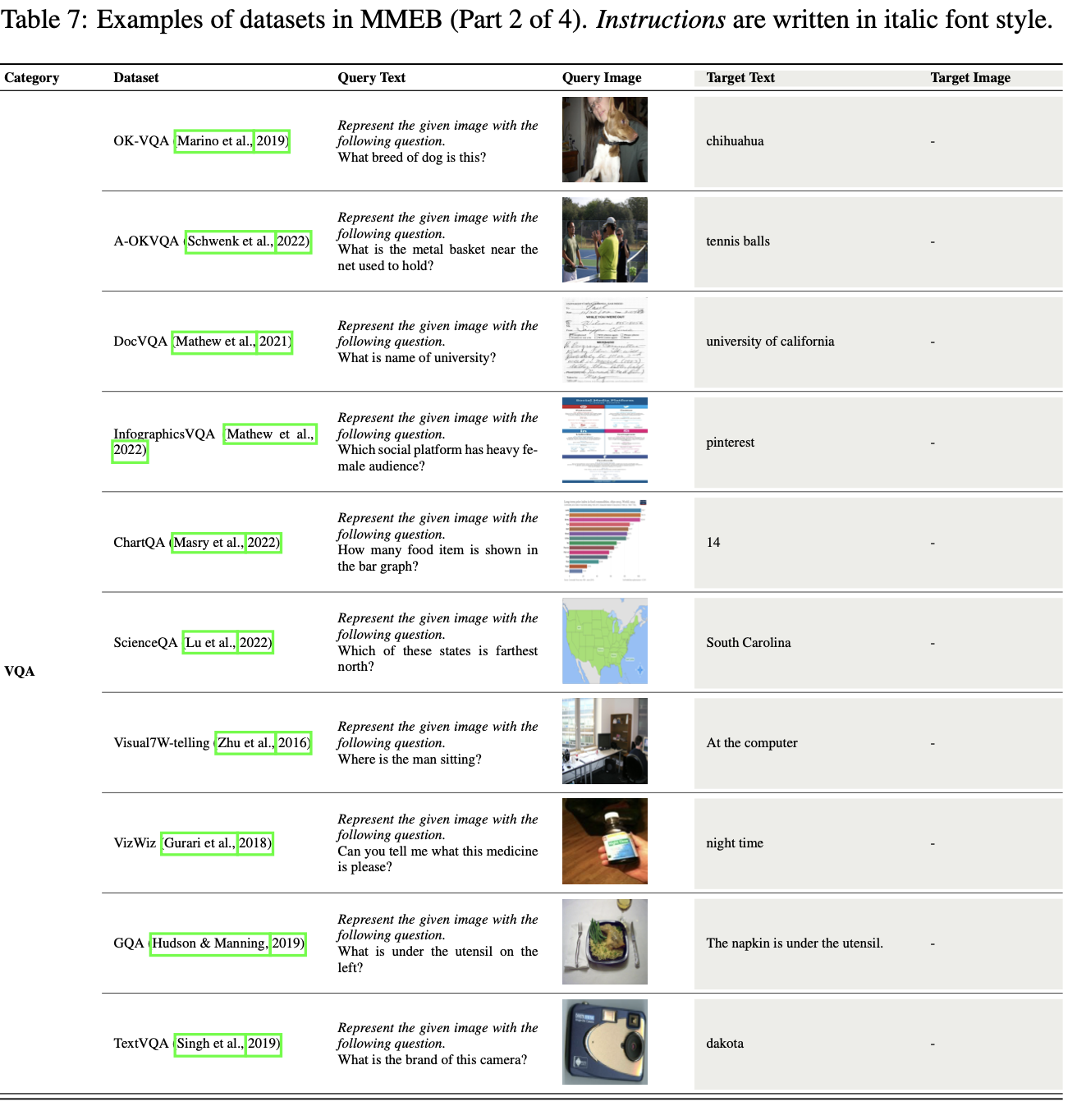
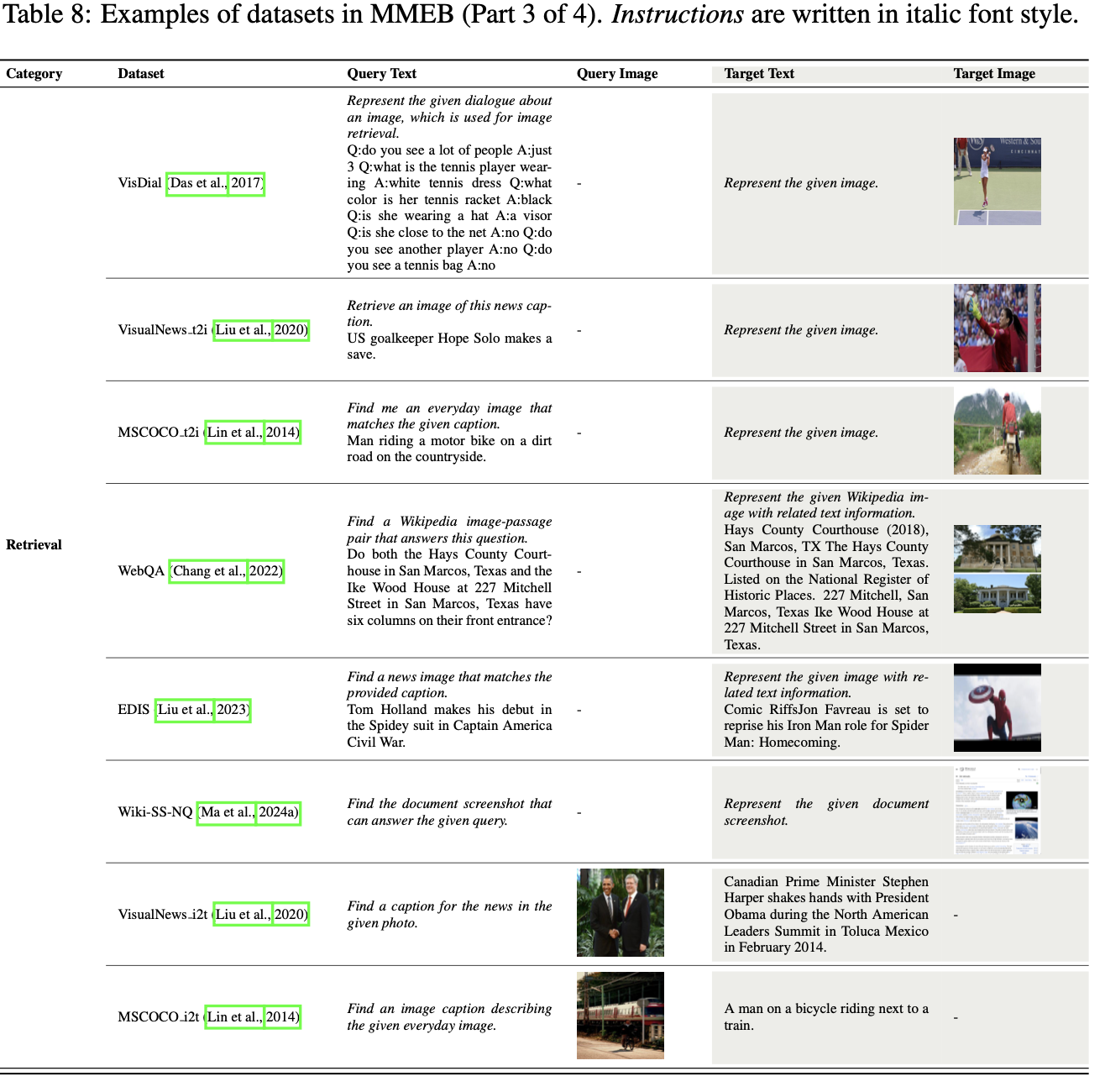
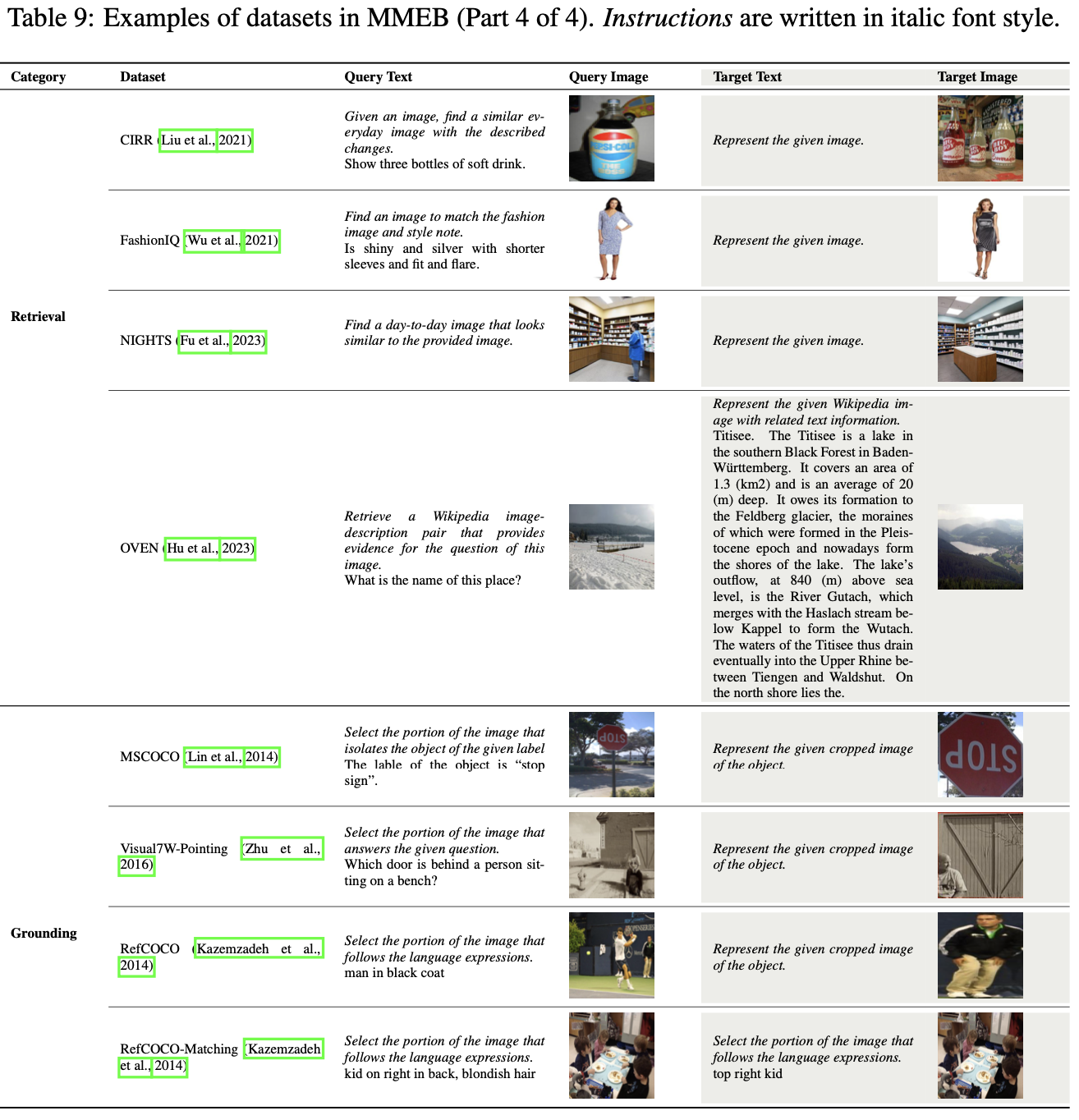
-
-
$t^+$: positive target. 1개의 image 혹은 text 혹은 image+text일 수 있음
-
$t^-$: negative target. 1개의 image 혹은 text 혹은 image+text일 수 있음
-
h${inst}$, h${t^+}$: query embedding, positive target embedding
- 마지막 layer의 마지막 token의 vector representation을 가지고 contrastive learning을 수행함
-
$\phi$: cosine 유사도

-
-
GradCache
-
Contrastive Learning 수행할 때, hard negative을 넣어주는게 좋으나 실제로는 이를 찾기가 어려움
-
때문에 batch size를 늘려주어, 많은 negative sample을 계산식에 넣어주는게 중요함
-
하지만 GPU memory 제한이 있어, 이를 늘리는 방법인 GradCache를 도입함

- $\hat{Q}_j$: j번째 sub-batch
-
두개의 steps
- Representation Gradient Computation & Caching
- Sub-batch Gradient Accumulation
-
4. Experiments
-
MMEB Benchmark
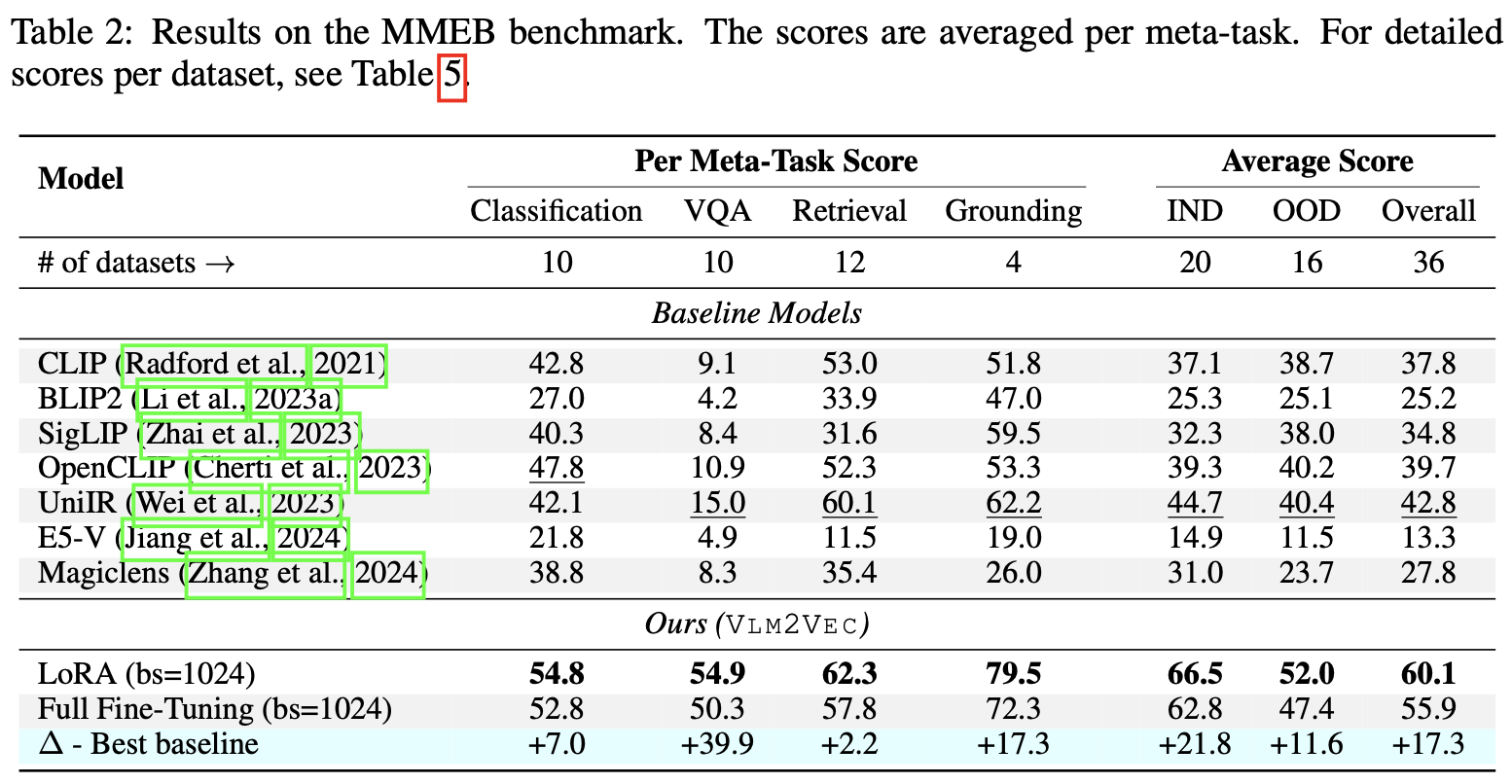
-
Generalization Ability
-
Retrieval (8개 dataset finetuned) > VQA (6개 dataset finetuned) > Classification (5개 dataset finetuned) 순으로 성능을 보임
$\to$ Retreival dataset이 image, text가 instruction에 더 다앙해 좋은 성능을 보임
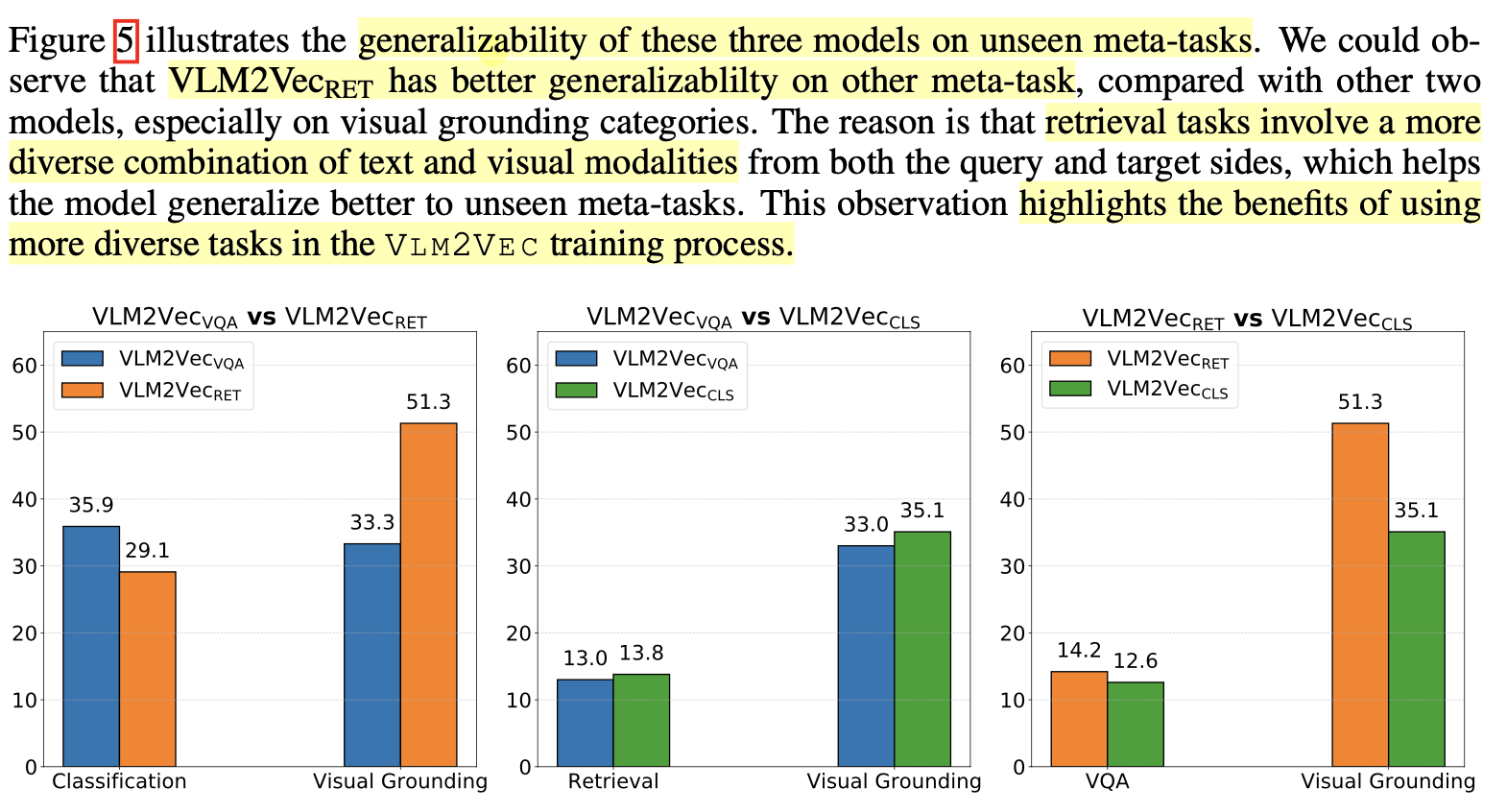
-
-
Ablation studies
-
Full finetuning vs. LoRA
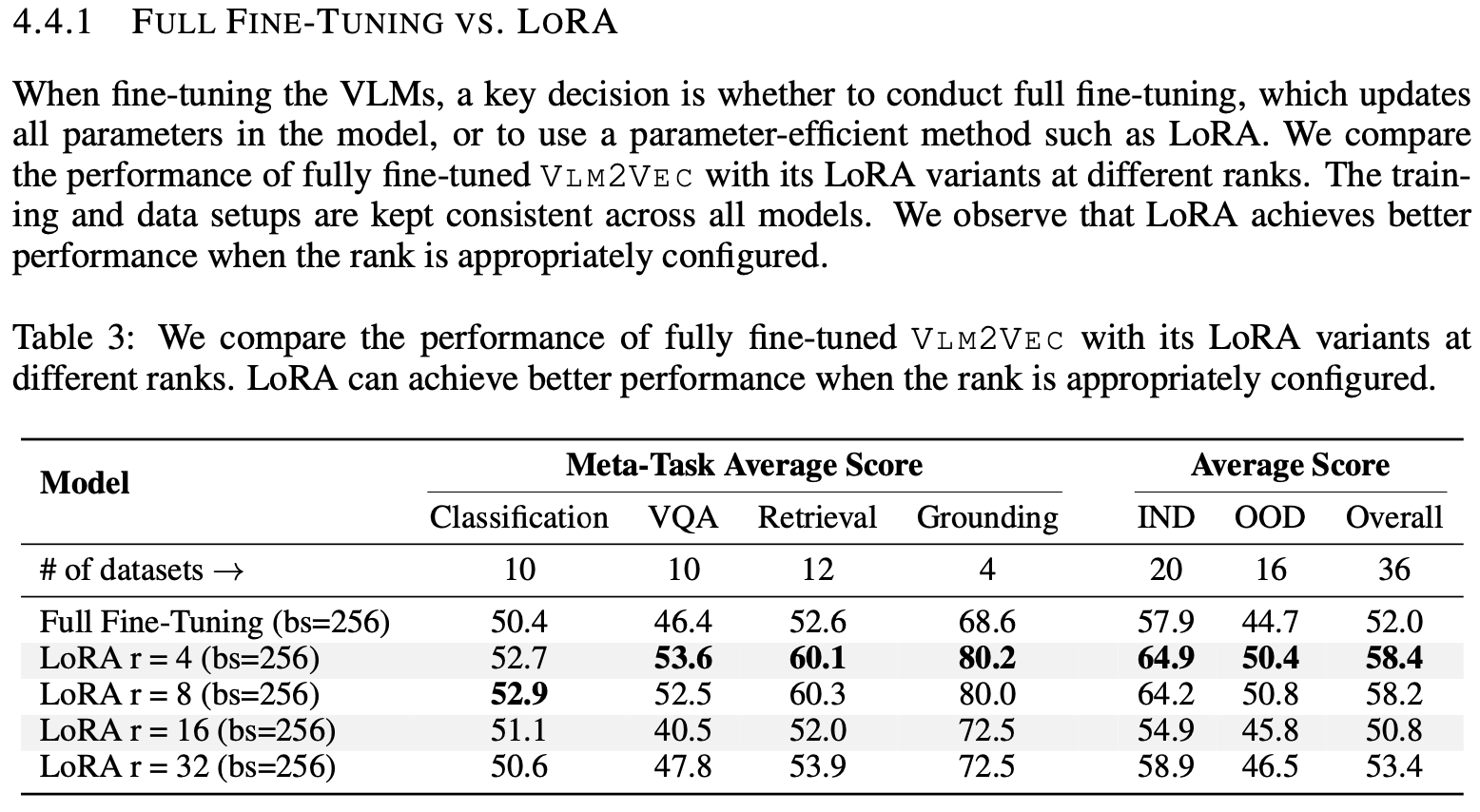
-
Hyperparameters (Batch-size & Number of training steps & Number of Sub-images)
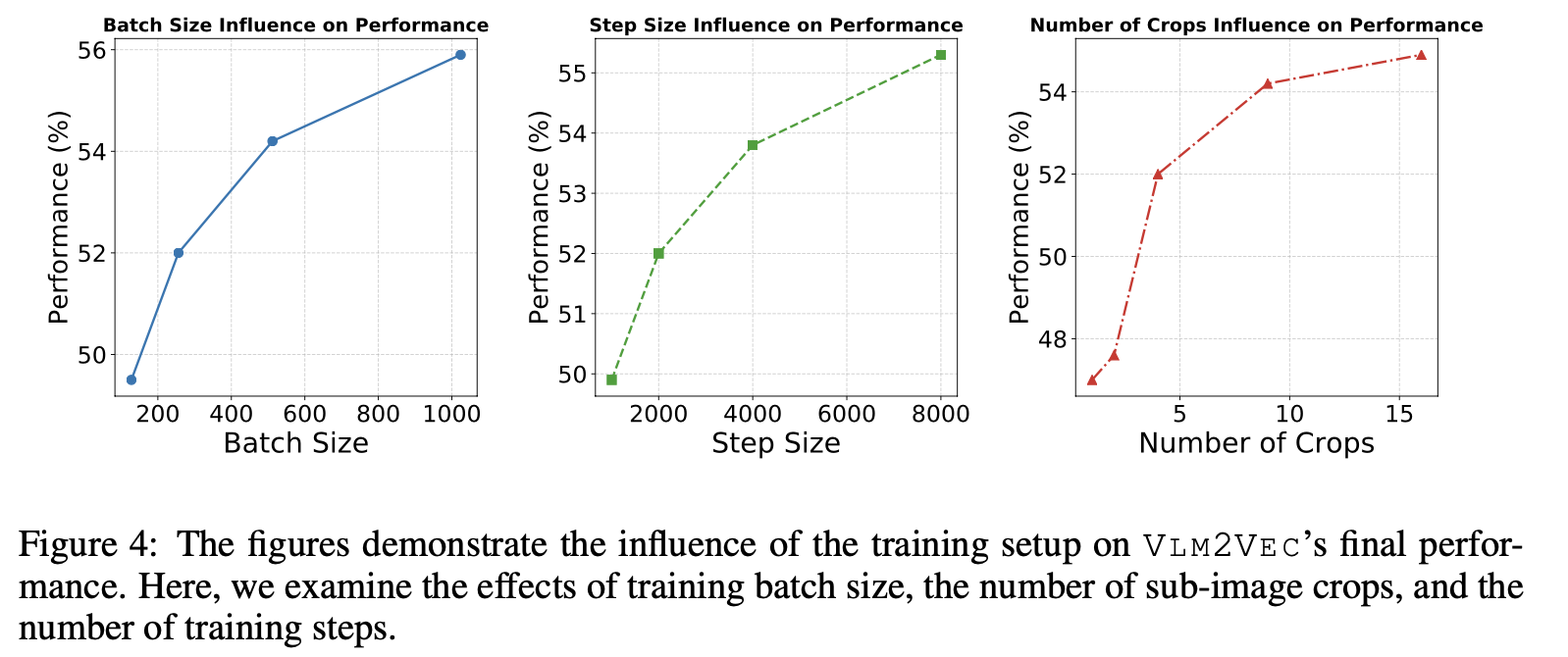
-
Instruction Following 유/무

-